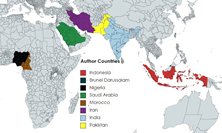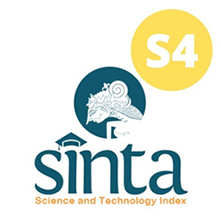Measuring Instruments For Oxygen Concentration, Flow, Temperature, and Humidity In CPAP Equipped With Microcontroller Based External Data Storage
Abstract
The recommended approach for addressing sleep apnea in infants involves the utilization of CPAP therapy. A pivotal component of CPAP therapy is the inclusion of a humidifier, which serves to counteract potential hazards by introducing humidified air. The purpose of this study was centered on developing a compact, portable model to assess temperature and humidity parameters in CPAP humidifiers. The method utilized was the pre-experimental One Group Post Test Design. The contribution of this research lies in its ability to measure temperature and humidity in the CPAP humidifier using the SHT30 sensor. The sensor readings were processed using the Arduino Mega 2560 Pro Mini microcontroller. The measurement data was presented on a 20x4 LCD screen and had the capability to be stored using an SD Card, alongside the inclusion of a buzzer indicator on the tool. The results demonstrated that the highest error value for the temperature parameter was 1.8%, while the lowest was 0.49%. The expected conclusion is that these findings can be implemented effectively to assist operators in recording, measuring, and monitoring temperature and humidity in CPAP humidifiers and to facilitate monitoring of sleep apnea treatment procedures.

This work is licensed under a Creative Commons Attribution-ShareAlike 4.0 International License.
Authors who publish with this journal agree to the following terms:
- Authors retain copyright and grant the journal right of first publication with the work simultaneously licensed under a Creative Commons Attribution License that allows others to share the work with an acknowledgement of the work's authorship and initial publication in this journal.
- Authors are able to enter into separate, additional contractual arrangements for the non-exclusive distribution of the journal's published version of the work (e.g., post it to an institutional repository or publish it in a book), with an acknowledgement of its initial publication in this journal.
- Authors are permitted and encouraged to post their work online (e.g., in institutional repositories or on their website) prior to and during the submission process, as it can lead to productive exchanges, as well as earlier and greater citation of published work (See The Effect of Open Access).











